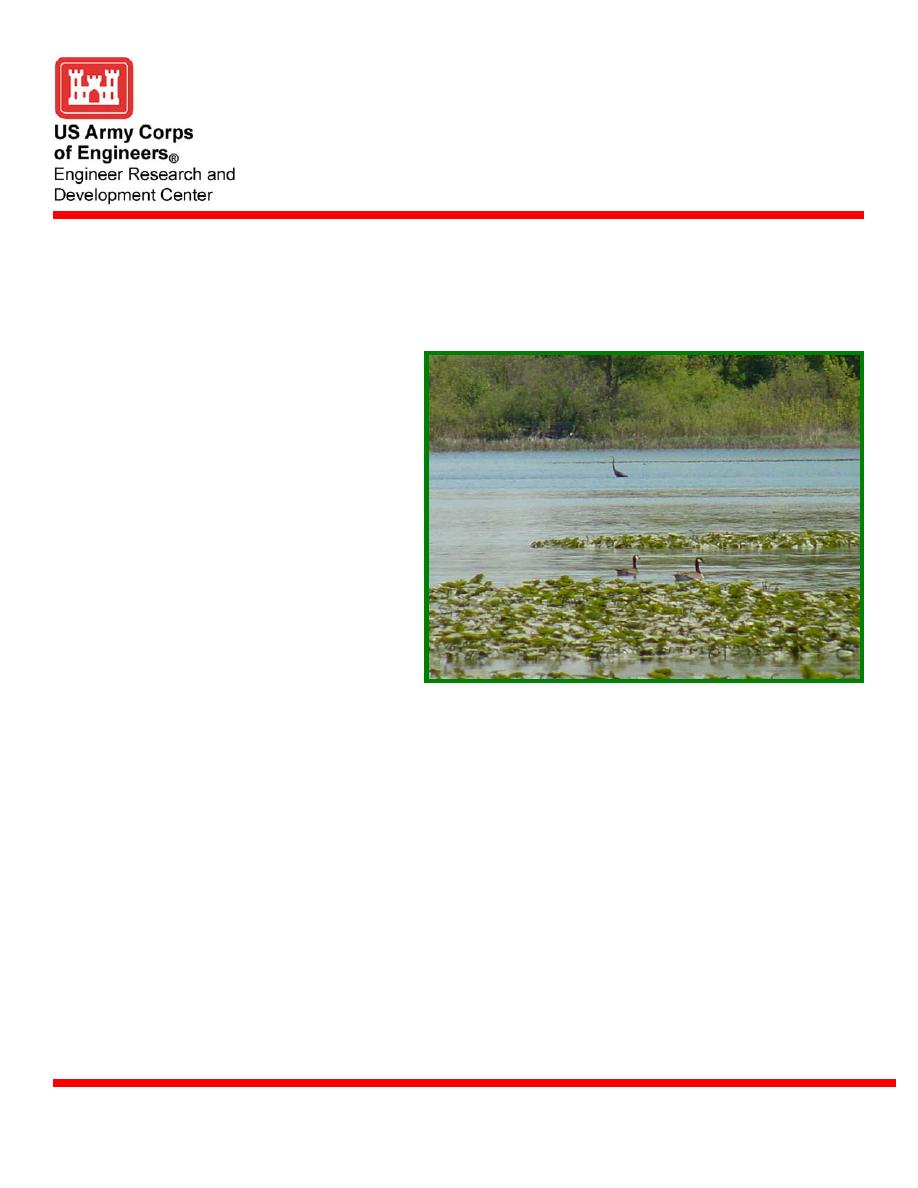
National Erosion Control Development and Demonstration
Program (Section 227)
Sheldon Marsh Nature Preserve
Description
Sheldon Marsh Nature Preserve is located on the southwestern shore of Lake Erie near
Sandusky Bay, Ohio. The Sheldon Marsh project site consists of a 1.8-km- (6,000-ft-) long
barrier beach and wetland preserve located at the southeast end of the 10.5-km- (6.5-mile-)
long Cedar Point sand spit in Huron, Ohio. Sheldon Marsh is one of three remaining Lake
Erie coastal wetlands not restricted by a system of dikes for water level management. The
marsh contains many
types of habitat such
as old-field, hard-
wood forest, wood-
land swamp, cattail
marsh, barrier sand
beach, and open
water-lake (Ohio
Department of
Natural Resources
2002). Restoration of
the barrier beach is
essential to the
survival of existing
and future plant and
animal communities.
Sheldon Marsh is a
designated nesting
site for the piping
plover, a federally
Wetland preserve is one of few remaining coastal wetlands
along Lake Erie
endangered species.
Issue
In 1972, storm waves breached the sand spit separating the Sheldon Marsh barrier from the
remainder of Cedar Point Spit. During the subsequent 30 years of above-normal lake
levels, the barrier beach retreated about 366 m (1,200 ft). During the high-water years
between 1972 and 1998 the barrier beach receded at rates up to 19 m (60 ft) per year.
Storm waves superimposed on 0.6- to 0.9-m (2.0- to 3.0-ft) surges generated by northeast
storm winds readily overtop the existing barrier beach, sweeping sand across the barrier
into the wetland, thus removing it from the littoral system. Recession of the barrier is
further aggravated by impoundment of littoral sediments at the Huron Harbor complex
located 4.8 km (3 miles) east of Sheldon Marsh, and loss of material to a small access
channel located at the western end of the proposed project area. Continued recession of the
barrier is threatening the nature preserve's 1.9 km2 (0.7 square miles) of coastal wetlands.
Technology
The project will use an innovative system of segmented, wide-crested, submerged rubble-
mound breakwaters to provide wave attenuation, shore protection, and minimize sand loss
to the open lake due to cross-shore transport. Two types of dune stabilization methods will
also be investigated at the site in addition to the submerged breakwaters: the Dune Ladder
U.S. Army Engineer Research and Development Center
May 2005
www.erdc.usace.army.mil



 Previous Page
Previous Page
